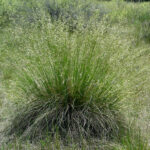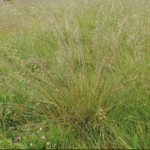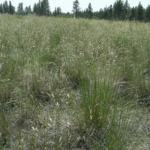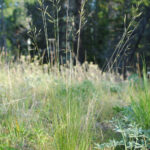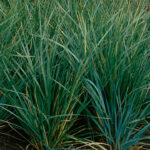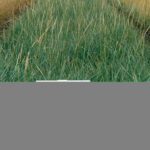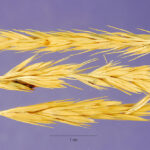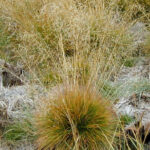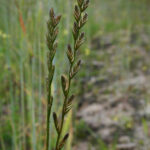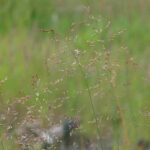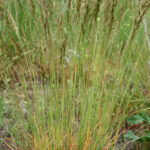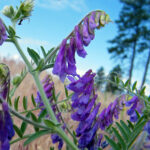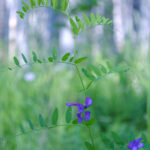Rough Fescue
General Description
Rough fescue is a densely tufted, native perennial bunchgrass, an important component of British Columbia’s native grasslands (as it originates in B.C). The name rough refers to the rough edges of the leaves and stems. It has fibrous roots and is rarely rhizomatous. Plants spread from tufts growing at the edges of the crowns. Plains rough fescue (Festuca hallii) is found in the other provinces, however, is not included in Forage U-Pick as there has been very little success in establishing plants within seeded stands.
Type
Native grass.
Origin
Native to British Columbia.
Longevity
Long-lived.
Use
Restoration, grazing. Important forage for both wildlife and livestock. Used in grassland restoration and site rehabilitation.
Optimal Time of Use
Spring and fall.
Recovery After Use
Rough fescue can be managed with proper utilization and periodic year-long rest. Continued defoliation during the latter part of the spring growth period can be detrimental to rough fescue.
Yield
One of the highest yielding of British Columbia’s native grasses. Yields on excellent condition grasslands where it is dominant average more than 1,100 kg/ ha (982 lb/acre) and can be as high as 2,700 kg/ha (2,411 lb/acre).
Palatability/Nutritional Value
Good palatability and is readily grazed and has different forage and palatability levels in different regions. It cures on the stem, but early frosts may interfere with the curing process.
Annual Precipitation min/max (mm)
305mm / 610mm.
Drought Tolerance
Low drought tolerance.
Flooding Tolerance
Low tolerance to flooding.
Winter Hardiness
Moderate winter hardiness. Rough fescue requires a frost-free period of at least 90 days.
Soil Texture Preference
Prefers medium- to coarse-textured soils.
Erosion Control
Can provide high protection from erosion once established. Slow establishment limits use in critical erosion control situations.
Salinity Tolerance
No to low tolerance.
Acidity Tolerance
Low tolerance, can tolerate soil pH levels down to 6.
Alkalinity Tolerance
Low tolerance – up to pH 8.0.
Seeds per kg
600,000 seeds/kg (272,156 seeds/lb)
Suggested Mixtures
Rough fescue is suitable in a mixture with early- to mid-succession native species.
Ease of Establishment
Emergence is poor despite high germination rates. Rough fescue has moderate seedling vigour. Stand development is slow. Fourteen years after pipeline restoration in Alberta, seeded native fescue species cover is 50% of control sites.
Competitiveness
It is competitive when well established in naturally occurring native plant communities, however seeded stands struggle with establishment which results in low competitiveness.
Management Considerations
Grazing management is required for rough fescue to establish and persist.
BC Rangeland Seeding Manual, USDA Plants Database
Rough fescue is difficult to establish which limits practical application to restoration and reclamation applications where native species are desired in the upper elevation areas in the Bunchgrass zone, and in the Ponderosa Pine and Interior Douglas-fir zones.
Rough fescue is difficult to establish which limits practical application to restoration and reclamation applications where native species are desired in the upper elevation areas in the Bunchgrass zone, and in the Ponderosa Pine and Interior Douglas-fir zones.

